Mending fly line is a fundamental skill in fly fishing that can significantly improve presentation and success on the water. Whether you’re fishing moving currents or still waters, understanding how to mend fly line effectively is crucial for achieving a natural drift and enticing strikes from fish.
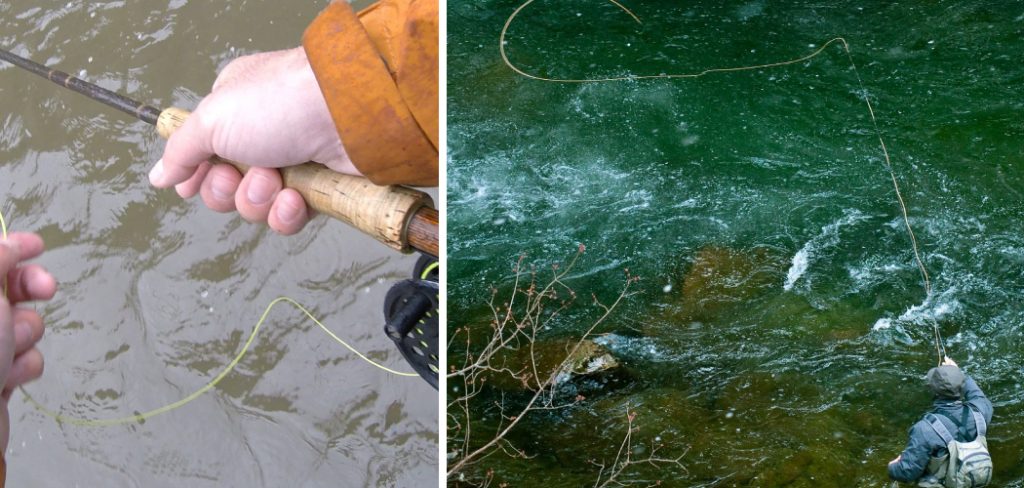
Proper mending allows anglers to adjust the position of their fly line on the water’s surface, minimizing drag and allowing the fly to drift naturally with the current. From upstream mends to downstream mends, each technique serves a specific purpose in controlling the drift of your fly and maintaining a lifelike presentation. In this guide, we’ll explore the essential techniques and strategies for mending fly line, empowering both novice and experienced fly anglers to enhance their fishing skills and enjoy greater success on the fly.
Importance of Mending Fly Line
Mending fly line is not merely a technique; it’s an art that lies at the heart of successful fly fishing. Its importance cannot be overstated, as it directly influences the fly’s ability to mimic natural insect movement, thereby increasing the likelihood of a strike. When the fly line is not properly mended, the current can cause unnatural drag, making the fly move in a way that appears suspicious to fish.
This can significantly reduce the effectiveness of the cast and often results in fish being spooked away from the fly. On the other hand, skillful mending adjusts the fly line’s position on the water, allowing the fly to follow the natural flow of the stream or river. This natural drift is what fish expect to see and are more likely to bite. Furthermore, mastering mending techniques enables anglers to fish in various water conditions and address challenges such as varying currents and wind, ultimately making them more versatile and successful fishermen.
The Concept of Fly Line Mending
At its core, the concept of fly line mending is about controlling the line after the cast has been made, to optimize the fly’s presentation to fish. Mending involves making deliberate movements with the fly rod to reposition the line on the water. This is done to counteract the effects of varying currents that can cause the line to bow or create drag that affects the fly’s movement.
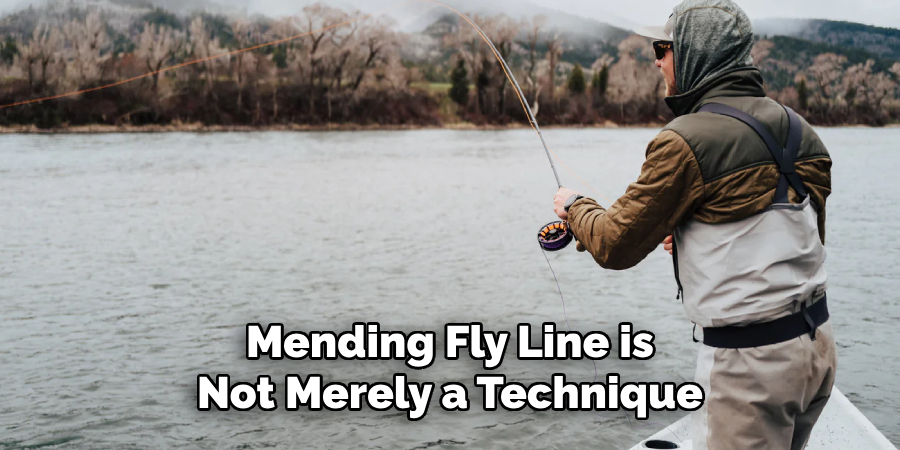
Effective mending ensures that the fly moves in a more natural manner, imitating the seamless glide of insects or small prey being carried by the water. There are two primary types of mends – upstream mends and downstream mends – each with specific applications based on the angler’s position relative to the current and the intended drift path of the fly.
Mending is a reactive and proactive technique, requiring anglers to read the water, anticipate how the current will affect the line, and adjust accordingly to maintain the illusion of a natural drift. Mastery of fly line mending transforms a static fishing experience into an active engagement with the rhythm and nuances of the river, enhancing one’s ability to entice and catch fish with skill and finesse.
Benefits of Proper Fly Line Mending
Proper fly line mending offers several key benefits that can dramatically improve an angler’s fishing experience and success rate. Firstly, it enhances the fly’s presentation by allowing it to drift in a more natural and enticing manner, closely mimicking the movement of real insects or prey. This natural presentation is crucial for fooling wary fish and triggering strikes. Additionally, effective mending minimizes the line’s drag on the water, preventing the fly from moving unnaturally and spooking fish.
Furthermore, by controlling the line’s position on the water, anglers can extend the duration of the fly’s drift, giving fish more opportunity to bite and increasing the chances of catching fish. Mending also enables anglers to effectively fish in various water conditions, from fast-moving streams to windy conditions, by adapting the line’s position to counter the effects of the current and wind. Ultimately, mastery of fly line mending techniques empowers anglers with the ability to read and respond to the river’s dynamics, leading to a more fulfilling and successful fly fishing experience.
Different Types of Mends
Mastering the different types of mends in fly fishing is essential for versatile and effective angling. Each mend type is designed to address specific challenges presented by the water’s currents and the desired drift of the fly. Here, we break down the most common mending techniques to elevate your fly fishing technique.

Upstream Mend
The upstream mend is used when you want to prevent the line from dragging the fly downstream too quickly. By lifting the rod and gently flicking the line upstream, the angler can counteract the faster-moving current at the surface, allowing the fly to drift more naturally with the slower current below. This technique is particularly useful in fast-flowing water where maintaining a natural drift is challenging.
Downstream Mend
Conversely, the downstream mend is applied when the angler needs to speed up the fly’s drift. This is done by moving the line downstream after the cast. The downstream mend is beneficial when fishing slower water below faster currents. By positioning the line downstream, the fly can keep pace with the surface current, maintaining a natural presentation.
Reach Cast
Though not a mend in the traditional sense, the reach cast incorporates a mend during the cast itself. As the line is going out, the angler reaches the rod upstream or downstream to position the line in anticipation of the current. This preemptive maneuver helps to achieve a better initial drift without the need for immediate mending after the fly lands.
Curve Mend
The curve mend adds direction to the line on the water, allowing the fly to drift around obstacles or in specific lanes of current. This is achieved by flicking the wrist at the end of the cast to impart a curve to the line in the desired direction. Curve mends can be upstream or downstream and are useful for navigating complex currents around rocks and other river features.
Understanding and applying these various mends allows anglers to adapt to changing conditions and present their fly in the most natural way possible, significantly increasing the chances of a successful catch.
10 Methods How to Mend Fly Line
1.Understanding the Basics of Line Mending:
Before diving into specific techniques, it’s essential to grasp the fundamental concept of mending fly line. Mending involves repositioning the fly line on the water’s surface to eliminate drag and create a natural drift.
By lifting, repositioning, or feeding line, anglers can counteract the effects of currents and ensure that the fly drifts naturally with the current. This skill is crucial for successful fly fishing, as a poorly mended line can quickly ruin a good presentation and result in fewer bites. While it may seem like a simple task, mending requires practice and finesse to get right consistently.

2.Mastering the Reach Mend:
The reach mend is a fundamental mending technique used to reposition the fly line upstream or downstream of the fly to achieve a drag-free drift. To perform a reach mend, extend your casting arm upstream or downstream immediately after the cast, allowing the line to land in a natural curve on the water’s surface. This adjustment helps to avoid drag and ensures that the fly drifts naturally with the current.
Other variations of the reach mend include the stack mend and the tuck mend. The stack mend is used to achieve a longer drift by stacking up excess line on the water’s surface, while the tuck mend is used to sink the fly deeper in fast-moving currents. These mending techniques are essential for presenting your fly in a natural and enticing manner to fish.
3.Utilizing the Stack Mend:
The stack mend is another essential mending technique that involves stacking or piling fly line on the water’s surface to create a drag-free drift. To execute a stack mend, lift the rod tip slightly and feed line onto the water in a controlled manner, allowing the excess line to stack on top of the main drift line.
This technique is particularly useful for fishing in fast-moving currents where a natural drift is essential. By utilizing the stack mend, you can present your fly in a more natural and realistic manner, increasing your chances of enticing a fish to bite. However, it requires practice and finesse to master the stack mend, as too much or too little tension can ruin the presentation.
4.Employing the Mending Roll Cast:
The mending roll cast combines the principles of mending and roll casting to reposition fly line on the water’s surface effectively. To perform a mending roll cast, make a roll cast upstream or downstream of the fly and immediately follow it with a mend in the opposite direction. This sequence allows anglers to achieve a drag-free drift while maintaining control over the presentation of the fly.
Mending roll casts are particularly useful when fishing on rivers with varying currents or in situations where the angler is unable to wade into a better position. By mastering this technique, anglers can effectively fish different sections of the river without having to constantly reposition themselves. This not only saves time but also reduces disturbance in the water that could spook fish.
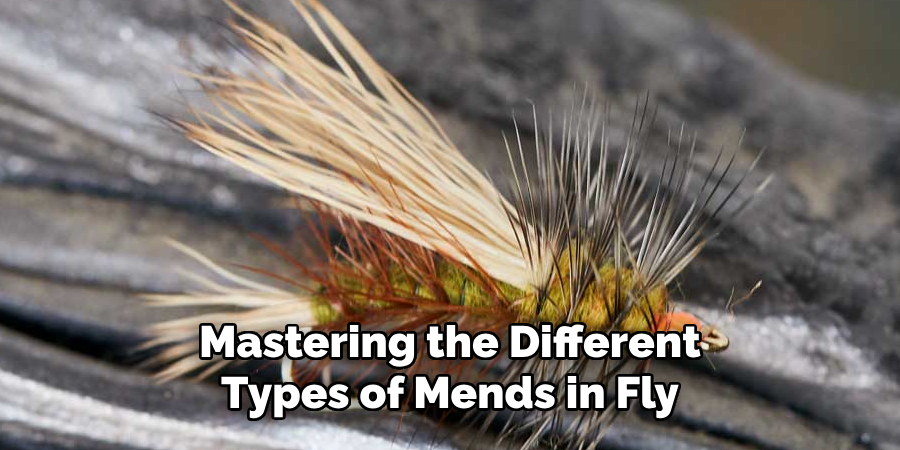
Another advantage of the mending roll cast is its ability to reposition fly line without disturbing the fly. This is especially important when fishing for spooky or selective fish that can easily be deterred by any unnatural movements on the water’s surface. By using this technique, anglers can make subtle adjustments to their presentation without alarming the fish.
5.Practicing the Line Lift Mend:
The line lift mend is a subtle mending technique used to lift the fly line off the water’s surface and reposition it without disturbing the fly. To execute a line lift mend, gently lift the rod tip and reposition the line in the desired direction, allowing it to settle back onto the water without creating unnecessary disturbance. This technique is particularly useful for making subtle adjustments to the fly’s drift in calm or slow-moving water. Additionally, the line lift mend is a great way to avoid spooking fish in more finicky conditions.
Mending techniques are essential for successful fly fishing because they allow anglers to control the movement and presentation of their flies on the water. By using mends, an angler can achieve a natural drift that mimics the behavior of live insects on the water’s surface. This is crucial because fish are often wary and will only take a fly if it appears to be a natural food source.
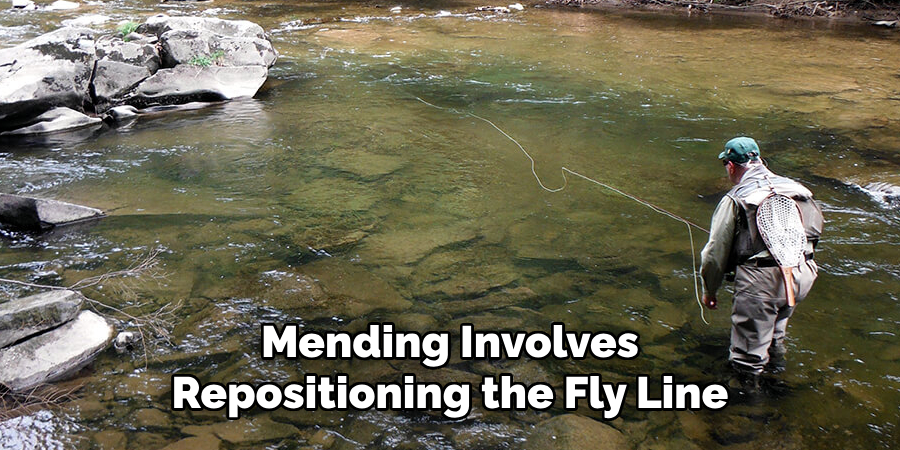
6.Using the Wiggle Mend Technique:
The wiggle mend technique involves creating a series of small wiggles or S-shaped movements with the rod tip to reposition the fly line on the water’s surface. To perform a wiggle mend, make short, rhythmic movements with the rod tip, alternating between left and right to create a snake-like pattern on the surface. This technique helps to break up the surface tension and reduce drag, allowing for a more natural drift. Moreover, it can be used to control the speed and direction of the fly line, making it an essential skill for anglers.
The wiggle mend technique is especially useful when fishing in fast-moving or turbulent water. The quick and continuous movements help to prevent the fly from dragging across the surface too quickly or being pulled under by strong currents. It also allows for better presentation of dry flies, as the wiggle movements simulate the natural movement of insects on the water.
7.Employing the Tuck Mend:
The tuck mend is a specialized mending technique used to initiate a controlled sink of the fly or leader in fast-moving currents. To execute a tuck mend, make a forward cast and immediately follow it with a sharp downward motion of the rod tip, tucking the fly or leader under the surface. This action allows the fly to sink quickly below the surface film, where it is less affected by surface currents and drag.
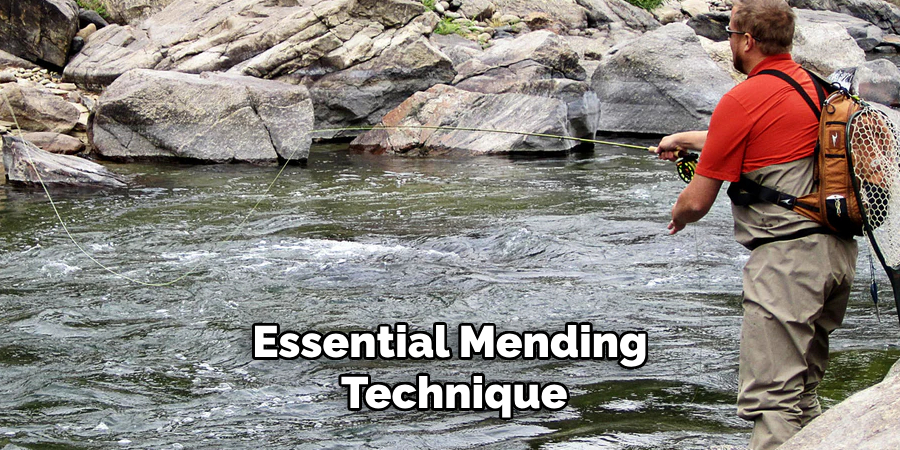
The tuck mend is particularly useful when fishing with dry flies or nymphs in fast-moving rivers, as it allows the fly to drift along with the natural flow of the current and appear more realistic to fish. It can also be helpful in reducing drag on the leader, which can spook fish and make your presentation less effective.
8.Mastering the Water Load Mend:
The water load mend is a technique used to reposition fly line on the water’s surface by loading the rod with the weight of the water. To perform a water load mend, extend your casting arm upstream or downstream of the fly and allow the current to pull the line tight. Then, make a smooth casting motion, using the weight of the water to load the rod and reposition the line in the desired direction.
This technique is especially useful when fishing in fast-moving water, as it allows for quick and accurate line mending without having to physically manipulate the fly line. When done correctly, it can present a more natural presentation of the fly and improve your chances of catching fish. Though it may seem simple, mastering the water load mend takes practice and finesse.
9.Practicing the Tension Mend:
The tension mend is a mending technique used to create tension on the fly line during the drift, reducing the effects of surface currents and drag. To execute a tension mend, maintain slight tension on the line with the rod tip while allowing the line to drift naturally with the current. This technique helps to keep the fly in the strike zone for a longer period, increasing the likelihood of enticing strikes from fish.
Aside from creating tension to overcome the effects of currents and drag, the tension mend also helps in controlling the drift of the fly. By keeping a tight line, you are able to manipulate the fly’s movement, making it look more natural and enticing to fish. This is particularly useful when fishing for picky or selective fish species that might be wary of unnatural movements.
10.Adapting to Changing Conditions:
Finally, it’s essential to adapt your mending techniques to suit the changing conditions on the water. Factors such as wind direction, current speed, and water depth can all affect the effectiveness of your mends. Experiment with different techniques and adjustments to find the most effective approach for the conditions you’re facing.
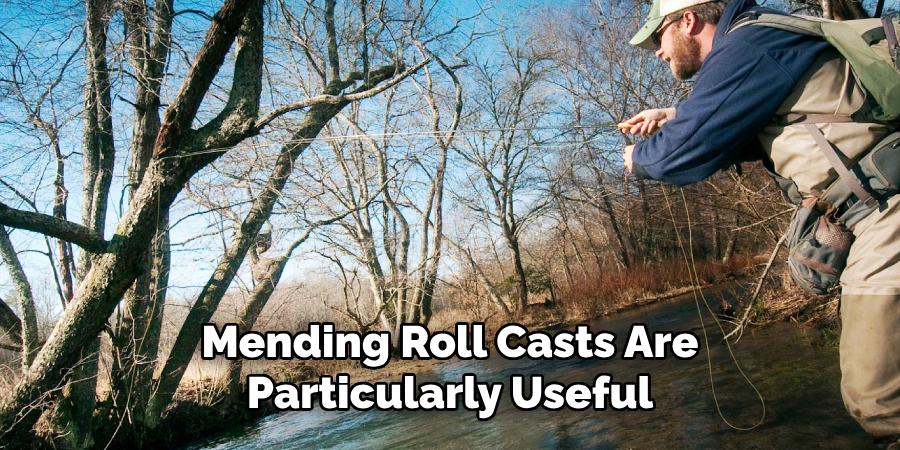
Conclusion
In conclusion, mastering the art of mending fly line is crucial for any fly angler looking to elevate their fishing game. By understanding the various techniques such as upstream, downstream, reach, stack, and mend stacking, anglers can effectively manipulate their fly line to achieve a natural drift and present their fly to wary fish with precision.
Avoiding common mistakes and practicing regularly are key to honing these skills. Remember, successful mending requires a combination of timing, line control, and finesse. Thanks for reading, and we hope this has given you some inspiration on how to mend fly line!
About the Author
Jennifer Branett is the author of Fishy Kayak and an expert in fish-related fields, with over 10 years of experience. Her work blends passion for fishing with a commitment to conservation.
Educational Background
Degree: Bachelor’s in Marine Biology
Institution: University of California, Santa Barbara
Specializations: Aquatic ecosystems, fish behavior, and sustainable practices
Professional Experience
Conservation Projects:
Collaborated with local organizations to restore aquatic habitats
Developed educational programs on sustainable fishing practices
Publications:
Authored articles for fishing magazines and environmental journals
Featured speaker at fishing expos and conservation conferences
Key Areas of Expertise
Fishing Techniques:
Kayak fishing strategies
Freshwater and saltwater fishing methods
Environmental Stewardship:
Advocacy for sustainable fishing
Promoting biodiversity in aquatic environments
Awards and Recognition
Recipient of the [Specific Award Name] for contributions to marine conservation
Recognized as a leading voice in the fishing community by [Organization/Publication Name]
Community Engagement
Workshops and Seminars:
Regularly hosts events to educate anglers on sustainable practices
Engages with youth programs to inspire the next generation of fishers
Online Presence:
Maintains an active blog sharing tips, stories, and conservation efforts
Engages with followers on social media to promote fishing ethics
Personal Interests
Enjoys kayaking in scenic locations
Passionate about photography, capturing the beauty of nature
Advocates for local conservation efforts in her community
